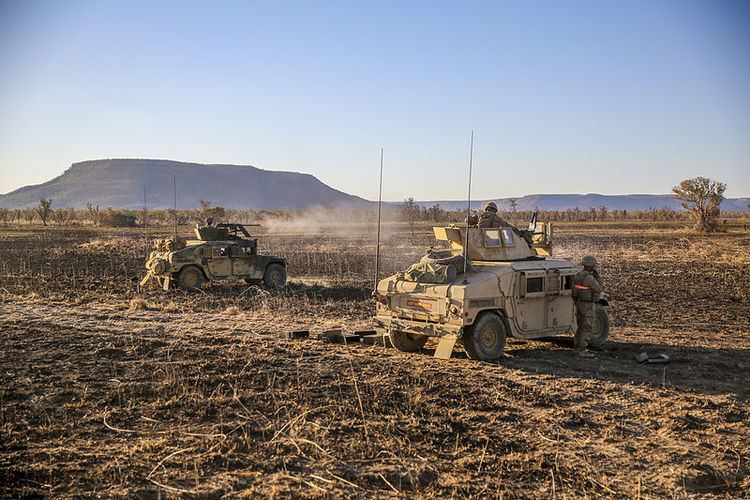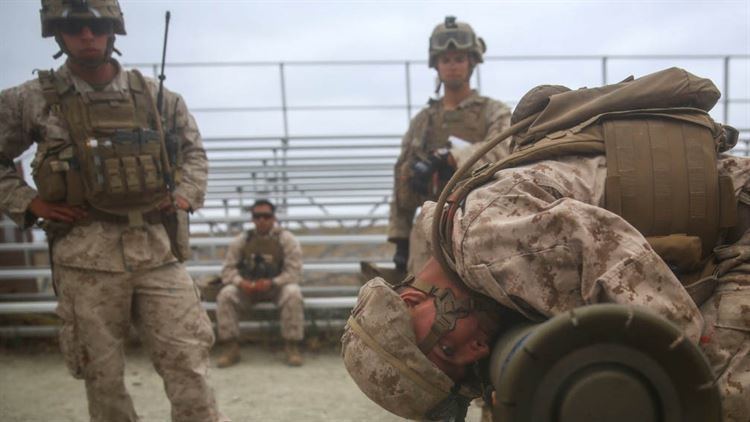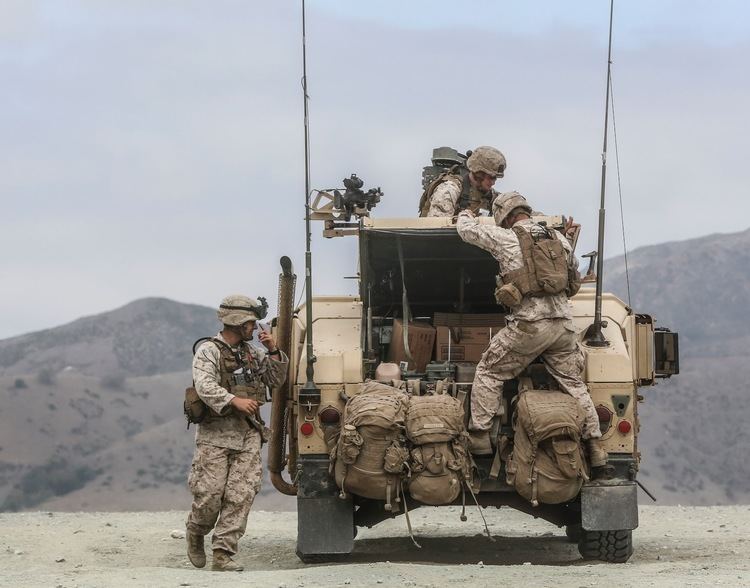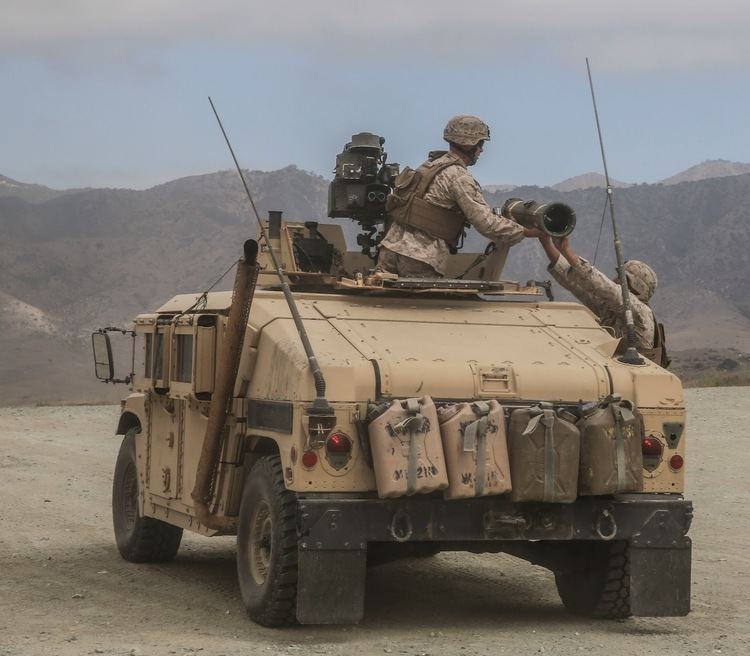 | ||
Similar III Marine Expeditionary Force, United States Marine C, United States Marine C, United States Marine C, United States Marine C | ||
Marine combined anti armor team firing tow javelin missiles
A Combined Anti-Armor Team is a concept of operations in the United States Marine Corps where a platoon in a weapons company is employed to combat armored vehicles with heavy machine guns and TOW missiles, in addition to providing security for convoys. CAAT platoons are one form of employment for heavy weapons in an infantry unit.
Contents
- Marine combined anti armor team firing tow javelin missiles
- Personnel
- Basic operations against armored vehicles
- Additional missions
- Organization of a CAAT platoon
- References

Personnel

A CAAT platoon is composed of machine gunners and anti-tank missilemen. They team up to provide the combined arms power of the M2 Browning .50 caliber heavy machine gun, Mk 19 40MM automatic grenade launcher, M-240B medium machine gun, and the TOW missile system either from vehicles or from a ground position.
Basic operations against armored vehicles

In its most basic role, a CAAT platoon and its various sections and teams will engage armored vehicles (tanks, APCs, etc.) first with heavy machine guns, usually the M2 .50 caliber machine gun. This is to "button up" the vehicle, or have the vehicle operators close all the hatches in order to protect themselves from the incoming rounds. When the target is effectively buttoned up, the TOW missile operator will fire a TOW missile, which, upon impact, will cause a dramatic increase in pressure in the closed target vehicle (such as a tank), causing it to explode from the overpressure, eliminating the enemy.
Additional missions

Due to their vehicle-borne nature, CAAT platoon will provide scouting capabilities during movements. They will traditionally take the lead for a movement of vehicles for security reasons, and therefore also taking responsibility for navigation and orientation. In addition, CAAT vehicles will be the last vehicles in the convoy (the rear, or "tail end charlie") for protection and get visual identitification on any oncoming vehicles from behind. If necessary, other CAAT vehicles can scout parallel routes or forward positions as necessary.
Organization of a CAAT platoon

A CAAT platoon will be divided into 2 or 3 sections, and each section will have an odd number of teams. Each section will be headed by a staff NCO, and the remaining pairs of vehicles will have NCOs in charge (personnel permitting). The billets (or jobs) in a vehicle can include:


The CAAT teams will usually be paired up as one heavy machine gun and one TOW truck. This allows the combined arms effect that is most effective on an armored vehicle. Usually the section heads (the odd vehicle of the paired teams) have an Mk 19, while the other teams have a .50 cal, M-240G, or a TOW missile. In addition, the section heads usually travel with a team (making three vehicles), so as to not be left alone.
